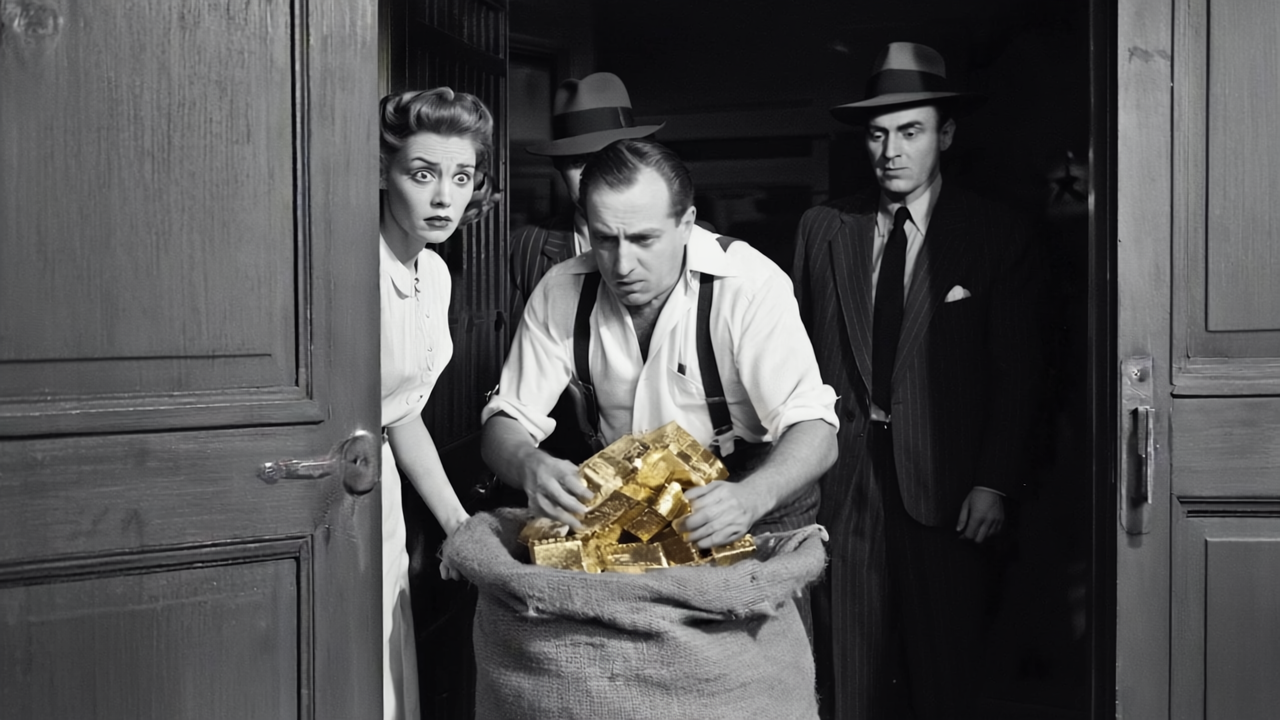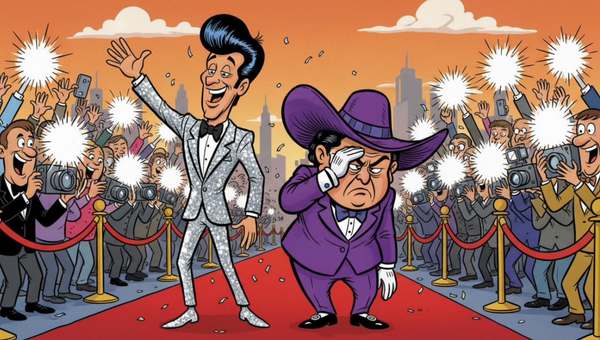The Golden Opportunity

Disclaimer: This lecture is for entertainment purposes only. Nothing in this lecture should be considered legal advice and/or financial advice. You are solely responsible for your investing decisions.
Jekyll Island is a fairly popular destination for tourists and residents alike. For decades, there has been an entry fee for tourists visiting the island.
In November 1910, six prominent men decided to take a trip to Jekyll Island. However, this trip was not for tourism, and they weren’t interested in casual socializing. They were there to discuss business, and they felt it was their business to help shape the destiny of America, and indeed, the world.
Senator Nelson Aldrich traveled to Jekyll Island with Paul Warburg, A. Piatt Andrew, Henry Davison, Arthur Shelton, and Frank Vanderlip.[1]
These men had met on Jekyll Island to determine how they could fix America’s banking system, which they thought needed an entire revamp.
But before we go further, why did they think there was something wrong with the banking system? What exactly went wrong in America?
The Panic of 1907
America had its fair share of financial crises, and one in the early twentieth century shook the country to its core. It became known as The Panic of 1907. In mid-October of 1907, the New York Stock Exchange plummeted to almost 50% of its highest value the previous year. Concurrently, there was an increase in Americans withdrawing their money from banks – indicating a distrust of the financial institutions that demanded their trust.[2]
The banker J.P. Morgan decided to fix this financial crisis, and he felt he needed to intervene in the economy. He used his massive fortune to bail out several private banks. He also paid off New York City’s payroll burden!
The United States was always seen as a country where the government would have little to no intervention in the economy. This is what made it seem like the “land of opportunity” for so many people across the world. However, after The Panic of 1907, it was clear that the attitude had changed – and many politicians felt that the government needed to take a more active role in the economy.
Senator Nelson Aldrich believed that the government had to intervene to prevent further financial crises. This is why the meeting on Jekyll Island took place.
This meeting, in 1910, was a secretive meeting and it wouldn’t be until the 1930s that it would be revealed to the public. It was the first of several meetings that the Jekyll Island group would have where they’d discuss what needed to be done to ensure a stable economy in the country. The answer was to create a central bank. The answer was to create The Federal Reserve.
Three years after the initial meeting on Jekyll Island, The Federal Reserve Act was established.
The same year, albeit a few months earlier, another major change happened in the country. The Sixteenth Amendment was added to the Constitution. The Sixteenth Amendment states:
“The Congress shall have power to lay and collect taxes on incomes, from whatever source derived, without apportionment among the several States, and without regard to any census or enumeration.”
With the Sixteenth Amendment, income tax was now official and so far, permanent. While income tax had been introduced a few times throughout American history, it was always a temporary measure, and the reasons for the introduction of income tax were varied. But now, Americans could expect that reporting their income and potentially paying income tax would become a regular part of their lives.
Well, not quite.
When income tax was first introduced, following the ratification of the Sixteenth Amendment, it was only levied on the richest Americans – and that too was a mere 1%. No doubt, few Americans really cared about a minor tax charge being imposed on the richest people in the country. This income tax didn’t affect most Americans, and one could imagine, most Americans went about their daily lives without thinking about this income tax.
However, there were some more discerning Americans who saw the writing on the wall. There were Americans who felt that the income tax would be levied on all Americans – and that this would have serious consequences on liberty.
In 1954, Frank Chodorov wrote the book The Income Tax: The Root of All Evil, in which he argued that the income tax was immoral and paved the way for the continuous stripping away of liberty in the United States.
But over 70 years since Chodorov’s book was released, the income tax is still here, and many Americans feel less free.
So, what have Americans done, historically, to protect their wealth, a necessary part of remaining sovereign, and protecting whatever little liberty one has left?
They hoarded gold. But even that wasn’t easy.
Before we go ahead, we’ll have to go back once again.
The Role of Gold
Gold and silver bullion were the original currencies in Colonial America, and even before the Constitution was written, it was understood that these precious metals would continue to be the currency of the United States of America.
Private banks would issue gold certificates – a paper note that was redeemable for gold bullion. This was done for convenience, so that Americans wouldn’t always have to carry gold coins or bars to make payments.
The Coinage Act of 1792 also permitted the production of coins that carried different values, with 100 cents adding up to One U.S. Dollar. Colonial America also had paper currency – popular among collectors today.[3]
The creation of The Federal Reserve made this central bank the sole issuer of the U.S. Dollar – which was backed by a gold standard. This means that The Federal Reserve would only issue as many U.S. Dollars as was permitted based on the country’s gold reserves.
This meant that if the U.S. held one million tons of gold, only the equivalent would be issued in dollars. The central bank wasn’t permitted to print a surplus of dollars. This new U.S. Dollar was first issued in 1914, the year after the creation of The Federal Reserve.
While we’re used to calling it the U.S. Dollar, the correct name for these banknotes is Federal Reserve Note. Look above Washington’s, Lincoln’s, Hamilton’s, Jackson’s, Grant’s or Franklin’s heads and you’ll see that name.
Not the Gold Rush We Asked For!
On April 5th, 1933, President Franklin D. Roosevelt signed Executive Order 6102 – which went immediately into effect. This order demanded that Americans hand in their gold bullion and certificates to The Federal Reserve or an associated bank. They had until May 1st to surrender their gold, or they were liable for a $10,000 fine and/or 10 years in prison![4]
But why was the U.S. Government so eager to grab Americans’ gold? It’s because the government felt that the American people were “hoarding gold” to protect their wealth. The government claimed this was harmful to the U.S. economy.
So, they were clear in their intentions. They didn’t want Americans to protect their wealth. Americans would be stripped of their financial freedom, which would make them less sovereign. Public and private transactions involving gold bullion was banned by The Federal Reserve.
All of this in the “Land of the Free.”
Eventually, this would come to an end, and Americans would be able to buy gold bullion once again. In fact, today, Pre-1933 gold coins are a collector’s item, as most of the confiscated gold bullion was melted by the U.S. government.
But the battle against gold hadn’t ended.
The Gold Standard and the End of The Gold Standard
By 1942, Income Tax was now levied an all Americans, and as a result, all Americans now had greater concerns on how they could protect their wealth. Increasingly, Americans were becoming aware of the gradual eradication of their liberties and sovereignty.
We also have to remember that the world was in the midst of the Second World War, and when a country is at war, one can expect government controls to increase. The Income Tax, now levied, on almost all Americans was seen as necessary to help finance the war against Nazi Germany.
The Allied Powers would use their gold reserves to help pay for their efforts to fight in the war. As a result, in 1944, after the War ended, these Allied Powers had difficulty operating on a gold standard.
This led to the Bretton Woods Agreement.
The 44 Allied Nations representatives met in Bretton Woods, New Hampshire, to develop a new agreement. The Bretton Woods Agreement stated that nations would trade using the U.S. Dollar backed by the gold standard rather than gold bullion.
This, however, wouldn’t last.
In August 1971, President Richard Nixon announced that the gold standard would no longer back the U.S. Dollar. Nixon asserted that international speculators were working to weaken the U.S. Dollar’s power. The Federal Reserve now had the authority to print as much money as it wished, as the country’s gold reserves no longer restrained it.[5]
Three years later, President Gerald Ford signed a bill that allowed Americans to buy, sell, and possess gold, putting an end to the draconian order passed by the Roosevelt Administration.[6]
While this was a significant move to restore Americans’ sovereignty, all was not well.
The Federal Reserve would continue to print an excess amount of dollars, and as a result, the currency lost its value. Today, the U.S. Dollar remains the reserve currency of the world, but it’s not as strong as it used to be. Discussions about the end of the dollar are ongoing, and this has led to other countries and their citizens looking for alternatives.
Gold has always been an alternative. And for most of human history, it wasn’t an alternative. It was the standard. Gold has always been seen as a store of wealth. It’s scarce and requires a lot of effort to mine. The gold you hold maintains its value and is recognized all over the world – from New York to New Delhi and from Timbuktu to Tasmania!
While many fear the continuing devaluation and potential end of the Federal Reserve Note, others are taking action by hoarding the precious metal that has stood the test of time.
Perhaps now, there’s a golden opportunity…
Notes
[1] Romero, Jessie and Richardson, Gary. “The Meeting at Jekyll Island.” Federal Reserve History, 4 Dec. 2015, www.federalreservehistory.org/essays/jekyll-island-conference
[2] Terrell, Ellen. “United Copper, Wall Street, and The Panic of 1907: Inside Adams.” The Library of Congress, 9 Mar. 2021, blogs.loc.gov/inside_adams/2021/03/united-copper-panic-of-1907/
[3] Blessing, Elizabeth. “The Coinage Act of 1792: Meaning, History, Requirements.” Investopedia, Investopedia, 27 Sept. 2022, www.investopedia.com/terms/c/the-coinage-act-of-1972.asp
[4] “Executive Order 6102 - Forbidding the Hoarding of Gold Coin, Gold Bullion and Gold Certificates.” Executive Order 6102-Forbidding the Hoarding of Gold Coin, Gold Bullion and Gold Certificates | The American Presidency Project, www.presidency.ucsb.edu/documents/executive-order-6102-forbidding-the-hoarding-gold-coin-gold-bullion-and-gold-certificates. Accessed 8 July 2025.
[5] “Nixon and the End of the Bretton Woods System, 1971–1973.” U.S. Department of State, U.S. Department of State, history.state.gov/milestones/1969-1976/nixon-shock. Accessed 8 July 2025.
[6] Domitrovic, Brian. “On New Year’s Eve 1974, You Could Own Gold Again.” Forbes, Forbes Magazine, 30 Dec. 2023, www.forbes.com/sites/briandomitrovic/2023/12/30/on-new-years-eve-1974-you-could-own-gold-again/
Lecture written by Raghav Suri.
Text (excluding text from the U.S. Constitution) and Audio is Copyright 2025 Raghav Suri. All Rights Reserved.
Lecture delivered by Ram Ranjini.
Get a speech or lecture written for you at SuriStrategies.com



